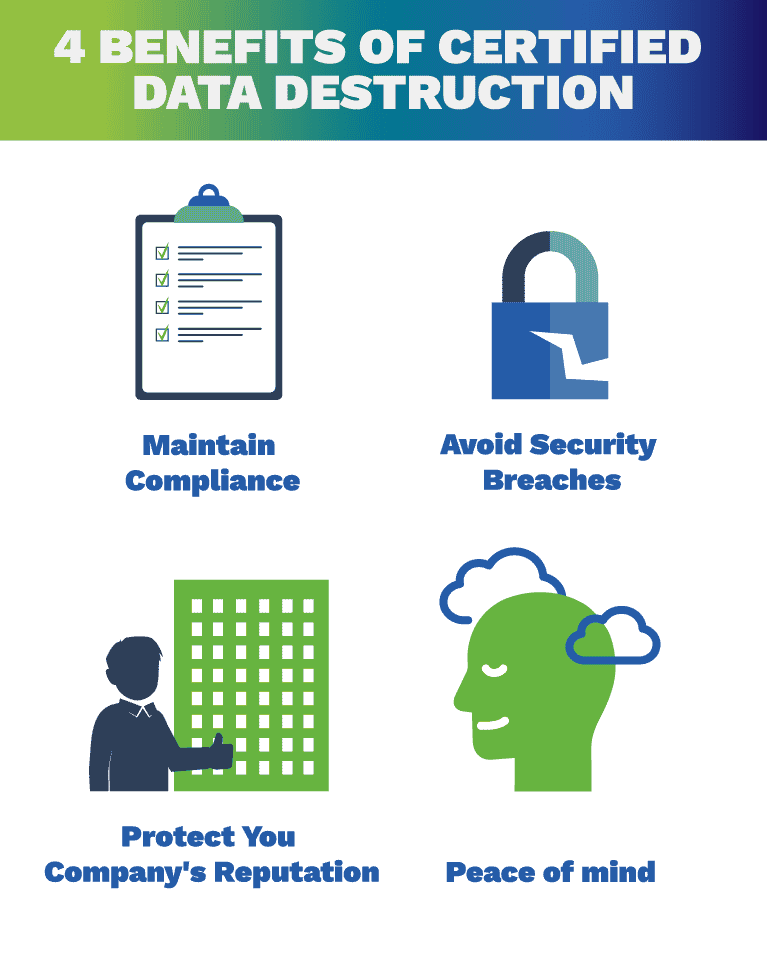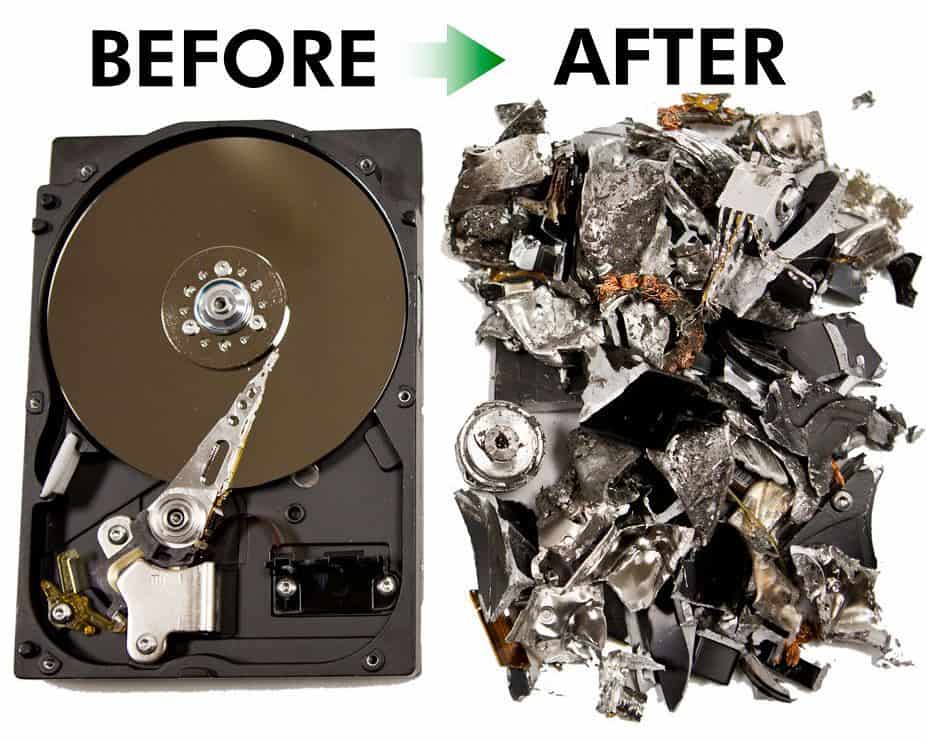Exploring the Significance of Data Damage in the Context of Computer System Security Providers and Protecting Confidential Data
In an age where data breaches are significantly common, the value of effective information devastation can not be overstated. What methods can organizations execute to enhance their data destruction procedures?
Understanding Data Destruction
Data destruction is a critical part of computer system safety that includes the irreversible removal of data from storage space tools to stop unauthorized access and potential data violations. In a progressively electronic landscape, organizations face increased dangers related to sensitive info being improperly accessed or manipulated. Reliable information destruction safeguards versus these threats, making sure that private dataâEUR" such as client details, copyright, and financial recordsâEUR" can not be recuperated after disposal.
Comprehending the value of information damage extends past simple conformity with regulative and legal frameworks; it is vital for preserving business honesty and depend on. When information is poorly handled or inadequately destroyed, the repercussions can be serious, including economic loss, reputational damage, and lawful obligations.

Approaches of Information Obliteration

One common method is data wiping, which entails overwriting existing information with random patterns multiple times. This technique makes the original information irretrievable, making it a preferred selection for companies looking for to secure secret information.
One more technique is degaussing, which makes use of a powerful electromagnetic field to disrupt the magnetic domains on storage gadgets, successfully eliminating the information. This method is specifically reliable for magnetic media however is not applicable to solid-state drives.
Physical destruction is an additional durable method, involving the shredding or crushing of storage space gadgets. This technique warranties that data recuperation is practically difficult, making it ideal for extremely delicate details.
Last but not least, encryption can act as a corresponding technique to information elimination. By encrypting information prior to removal, companies can include an extra layer of security, making sure that also if residues are recouped, they remain inaccessible without the decryption key. Each method must be picked based upon the level of data level of sensitivity and the details security needs of the company.
Legal Compliance and Data Safety
Organizations should browse an intricate landscape of legal demands associated with data safety and security, particularly after executing methods of data elimination. Different regulations, such as the General Data Security Regulation (GDPR) and the Health Insurance Mobility and Accountability Act (HIPAA), impose strict guidelines on exactly how organizations must dispose and handle of delicate information. Failing to follow these policies can result in considerable legal effects, consisting of significant fines and reputational damage.
Data damage procedures should be carefully recorded to demonstrate compliance with appropriate regulations and requirements. This documents not just works as proof of adherence to lawful commitments but also shows a commitment to protecting sensitive information. Organizations should likewise develop clear plans pertaining to information retention and devastation timelines, making certain that information is not held longer than essential.

In addition, routine audits and evaluations of information destruction methods are necessary to preserve conformity and adapt to advancing lawful frameworks (data destruction). By proactively resolving lawful requirements, companies can reduce risks associated with information violations and demonstrate their commitment to data security. Eventually, prioritizing lawful conformity in data destruction processes is not simply a regulative responsibility, but a fundamental aspect of a robust data safety and security technique
Effect On Company Online Reputation
The credibility of a business can be dramatically impacted by its method to information devastation and administration. In today's digital landscape, where information breaches can take place at any type of minute, the failure to properly deal with sensitive details can bring about extreme repercussions. Organizations that improperly take care of information damage threat exposing confidential customer details, which not only goes against personal privacy regulations but also wears down count on amongst stakeholders and clients.
A damaged credibility can lead to reduced customer commitment, as clients end up being hesitant to involve with a service that has demonstrated neglect in securing their data. Additionally, negative publicity bordering an information violation can have a long-term impact, as prospective customers may be hindered by the viewed lack of safety and security. This can bring about a direct decrease in revenue and market share.
Furthermore, organizations that prioritize data damage as part of their security method can enhance their online reputation by showcasing their dedication to guarding delicate information. By embracing rigorous information administration methods, companies can not only minimize dangers but likewise position themselves as credible entities in their respective industries, thereby enhancing their total brand image.

Ideal Practices for Secure Disposal
Applying ideal practices for safe and secure disposal of data is important for reducing risks connected with information violations and guaranteeing conformity with privacy regulations. Organizations must adopt an extensive information disposal plan that describes procedures for both digital and physical data destruction.
For physical information storage tools, such as Discover More Here difficult drives, shredding or degaussing is suggested to avoid information recuperation. Additionally, companies need to preserve a chain of safekeeping paperwork during the disposal process, making sure liability and traceability of disposed products.
For electronic information, making use of software program that follows market criteria for information cleaning is essential. This software ought to overwrite existing data several times, making recovery virtually impossible. It is additionally essential to validate the efficiency of the information destruction process through audits or third-party evaluations.
Educating employees on secure disposal methods adds another layer of safety, as human error can typically lead to information exposure. Regularly reviewing and updating disposal policies guarantees alignment with progressing regulations and technological advancements. By applying these best techniques, organizations can dramatically decrease the risk of unapproved data accessibility and boost their general information protection technique.
Verdict
In verdict, data damage is a fundamental aspect of computer safety and security solutions that guarantees the defense of secret information from unauthorized access. Executing effective approaches of data elimination, sticking to lawful compliance, and acknowledging the influence on organization track record are important components of a comprehensive data safety and security technique. By embracing best methods for safe disposal, companies can promote trust fund with customers and secure delicate data, eventually adding to a much more protected digital landscape.
In an era where information breaches are progressively usual, the value of reliable data damage can not be overemphasized.Information damage is a vital element of computer system safety that involves the irreversible elimination visit our website of data from storage devices to protect against unapproved accessibility and possible information breaches. Organizations ought to likewise develop clear plans pertaining to data retention and devastation timelines, making sure that data is not held longer than necessary.
By proactively addressing lawful requirements, companies can minimize risks connected with data breaches and demonstrate their commitment to information safety and security (data destruction). original site Eventually, focusing on lawful compliance in data damage procedures is not simply a governing obligation, however a fundamental facet of a robust data security method